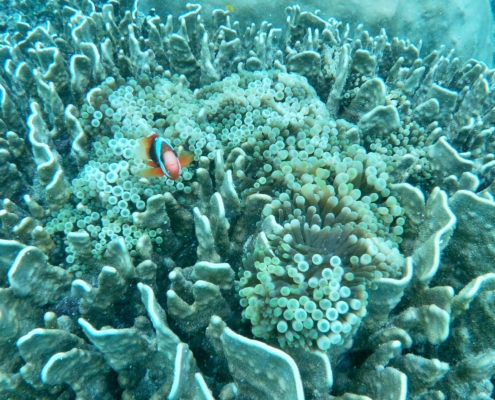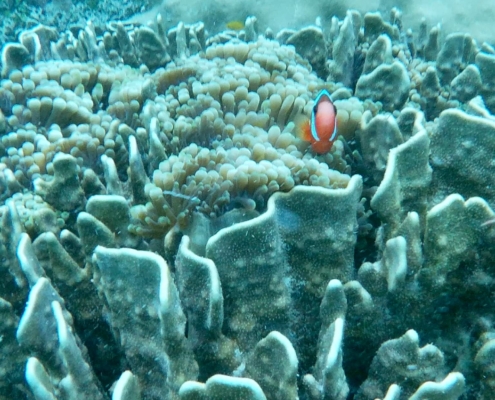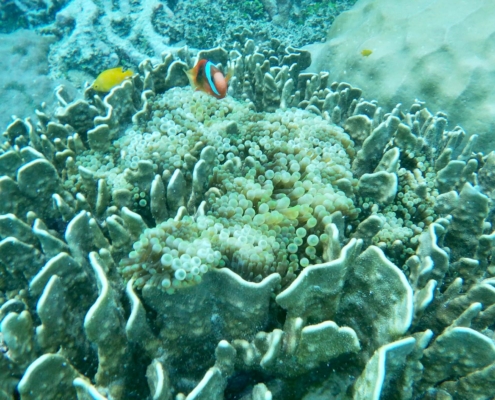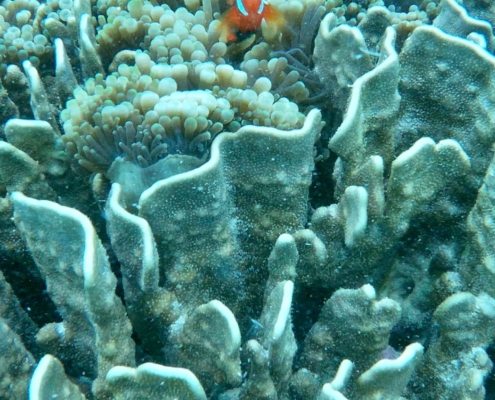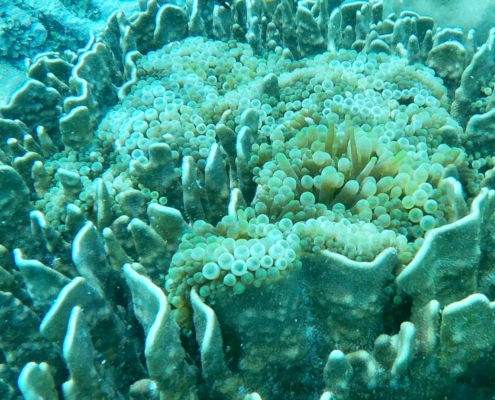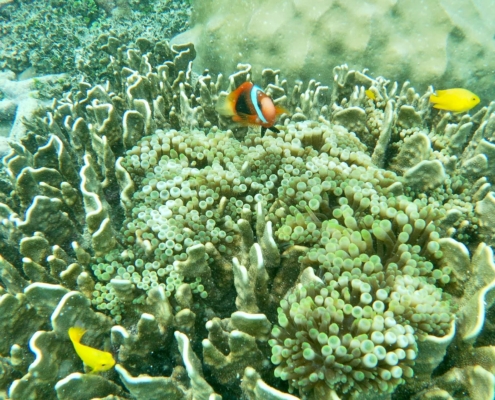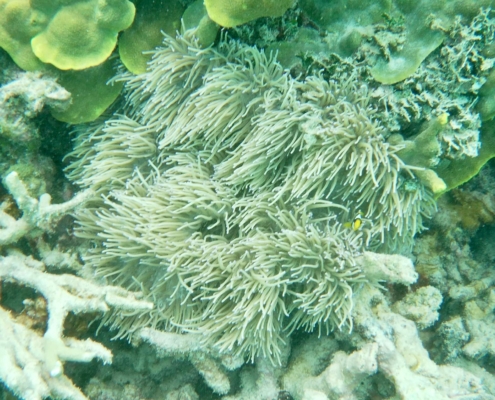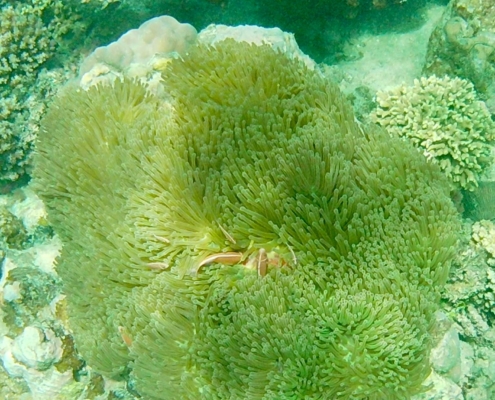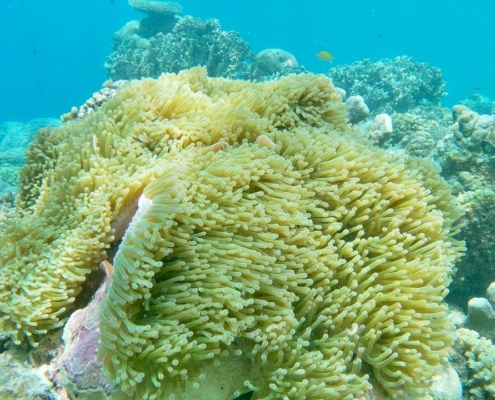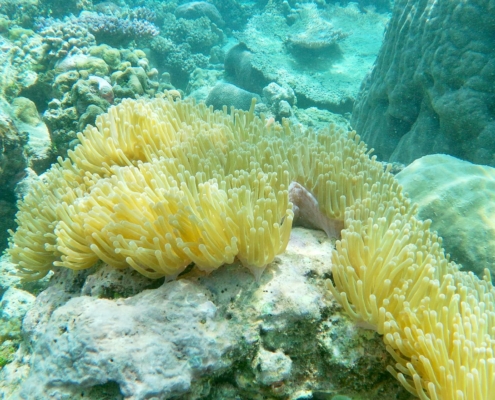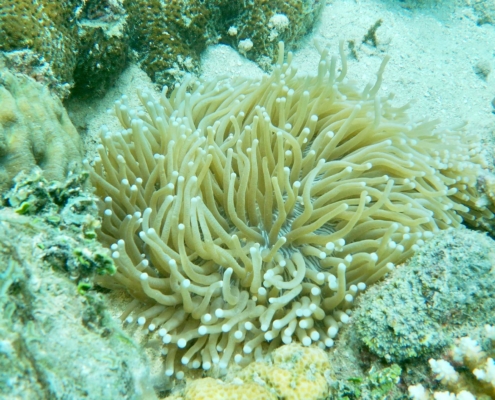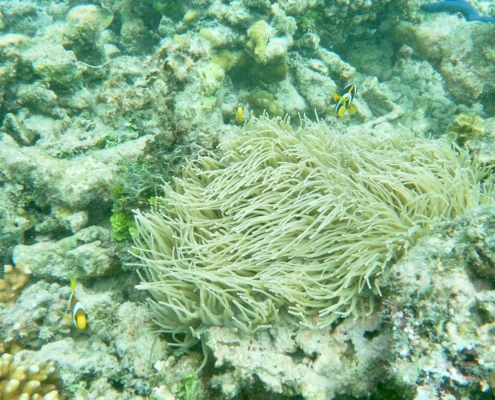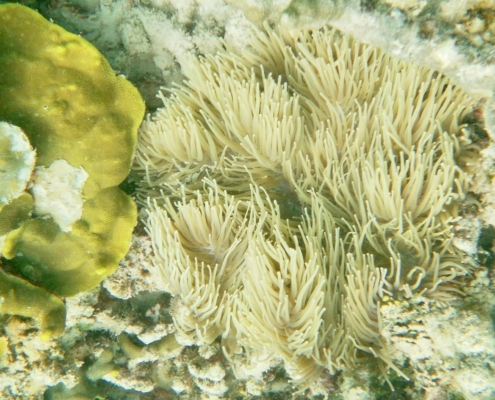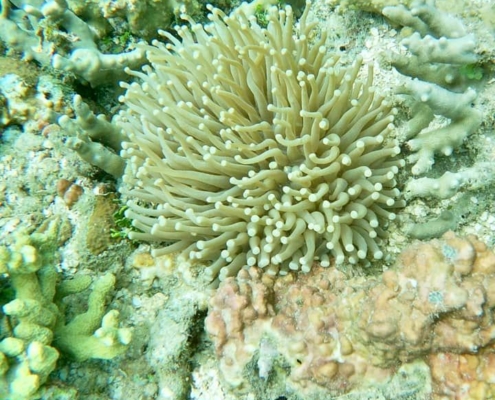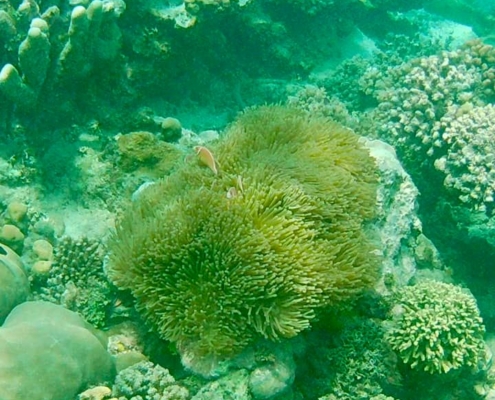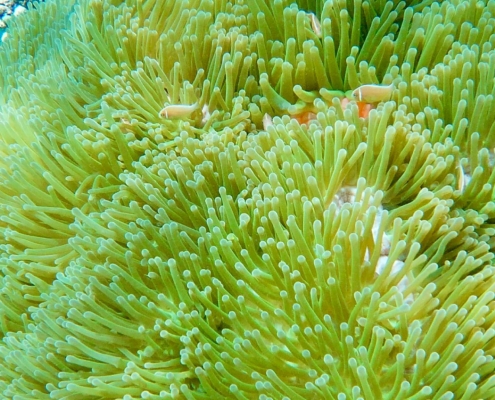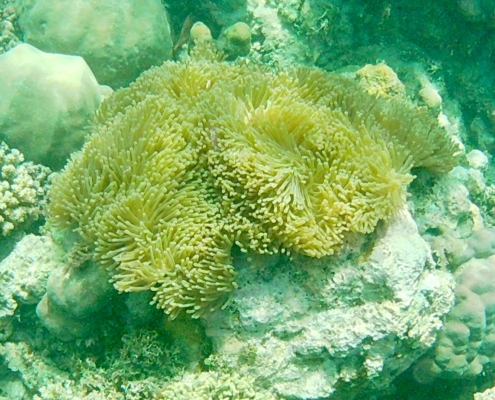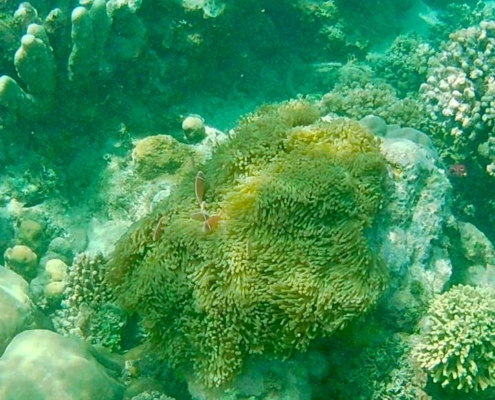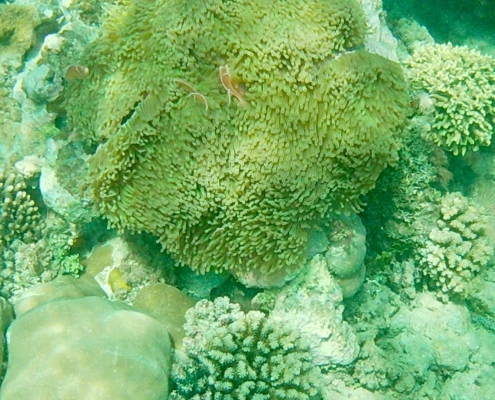Solomon Islands: Frigate Island – Clownfish
Clownfish (“Nemos”) are also known as anemonefish and they form mutualistic symbiotic relationships with sea anemones.the anemones provide safe and protected housing for the clownfish, the clownfish in turn help anemones with various parasites and increase water circulation thus drawing more food for the filtering anemones. The clownfish are totally immune to the sea anemone venom and their testicles. Clownfish come in more than just orange and yellow colors – they can be black and white, brown, blue, spotted and so on – there are over 30 species. Clownfish are very social and live in big groups and when you approach them the parents and bigger ones jump out to protect their anemones homes. Clownfish are hermaphrodites and when they are born they are all males. Then the biggest male becomes the dominant female and the second biggest male becomes the alpha male. the dominant female dies within the school of fish, the dominant male will then switch sexes and become the dominant female. A dominant female clownfish can lay from 100 to 1000 eggs. Once the eggs are laid, the female swims away, leaving the dominant male to do the egg sitting. If he finds that any eggs are infertile or damaged in any way, he often eats them. Clownfish are omnivores and can eat both the algae and scraps from their anemone hosts and small invertebrates and crustaceans. On average, a clownfish can live anywhere from 6 to 10 years.

